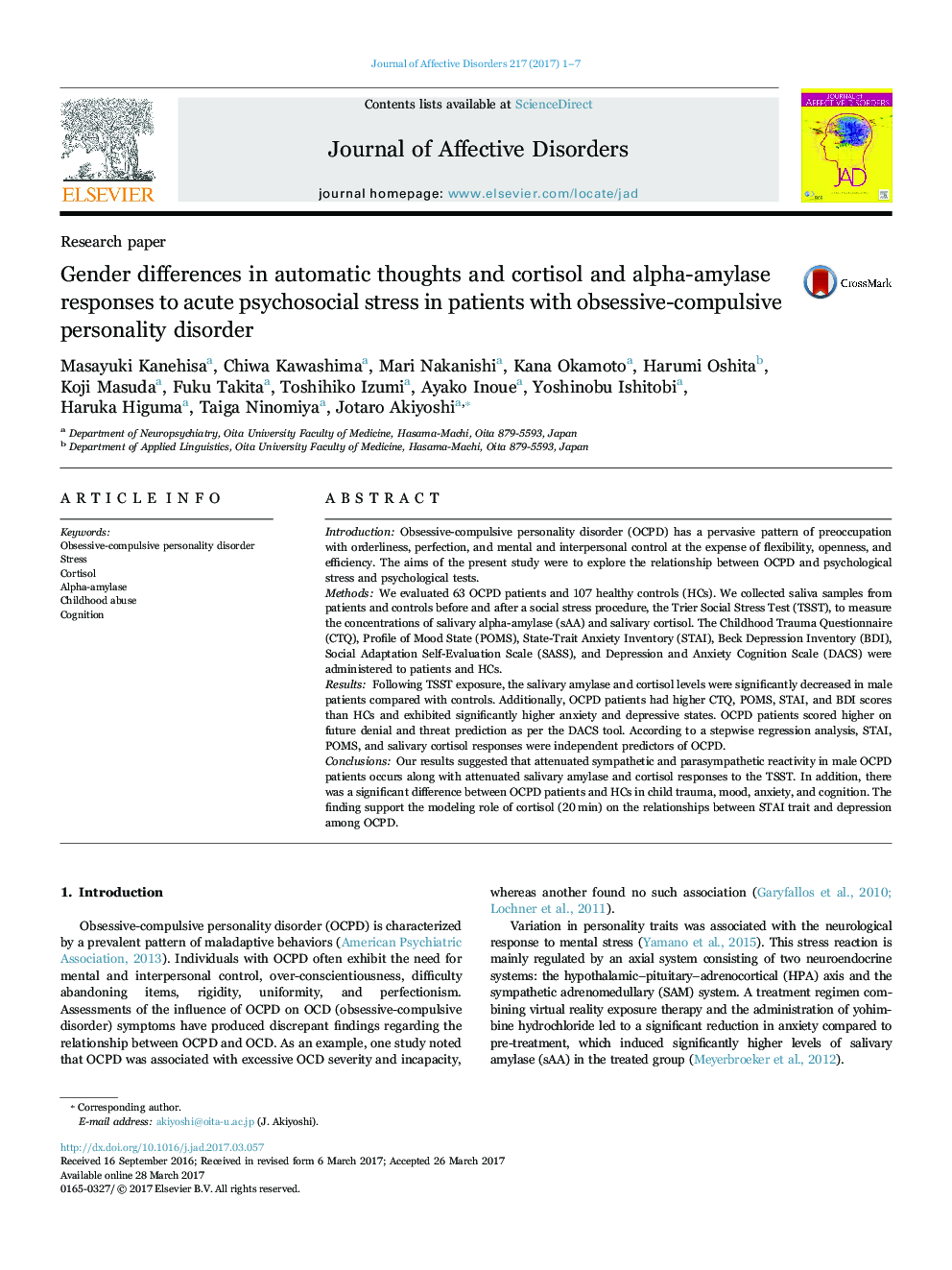| کد مقاله | کد نشریه | سال انتشار | مقاله انگلیسی | نسخه تمام متن |
|---|---|---|---|---|
| 5722173 | 1608108 | 2017 | 7 صفحه PDF | دانلود رایگان |
- Obsessive-compulsive personality disorder (OCPD) has a pervasive pattern of preoccupation.
- We examined the relationship between OCPD, psychological stress and psychological tests.
- TSST induced salivary amylase and cortisol significantly decrease in male patients.
- STAI, POMS, and salivary cortisol responses were independent predictors in OCPD.
- The finding support the modeling of cortisol between STAI and depression among OCPD.
IntroductionObsessive-compulsive personality disorder (OCPD) has a pervasive pattern of preoccupation with orderliness, perfection, and mental and interpersonal control at the expense of flexibility, openness, and efficiency. The aims of the present study were to explore the relationship between OCPD and psychological stress and psychological tests.MethodsWe evaluated 63 OCPD patients and 107 healthy controls (HCs). We collected saliva samples from patients and controls before and after a social stress procedure, the Trier Social Stress Test (TSST), to measure the concentrations of salivary alpha-amylase (sAA) and salivary cortisol. The Childhood Trauma Questionnaire (CTQ), Profile of Mood State (POMS), State-Trait Anxiety Inventory (STAI), Beck Depression Inventory (BDI), Social Adaptation Self-Evaluation Scale (SASS), and Depression and Anxiety Cognition Scale (DACS) were administered to patients and HCs.ResultsFollowing TSST exposure, the salivary amylase and cortisol levels were significantly decreased in male patients compared with controls. Additionally, OCPD patients had higher CTQ, POMS, STAI, and BDI scores than HCs and exhibited significantly higher anxiety and depressive states. OCPD patients scored higher on future denial and threat prediction as per the DACS tool. According to a stepwise regression analysis, STAI, POMS, and salivary cortisol responses were independent predictors of OCPD.ConclusionsOur results suggested that attenuated sympathetic and parasympathetic reactivity in male OCPD patients occurs along with attenuated salivary amylase and cortisol responses to the TSST. In addition, there was a significant difference between OCPD patients and HCs in child trauma, mood, anxiety, and cognition. The finding support the modeling role of cortisol (20Â min) on the relationships between STAI trait and depression among OCPD.
Journal: Journal of Affective Disorders - Volume 217, 1 August 2017, Pages 1-7
